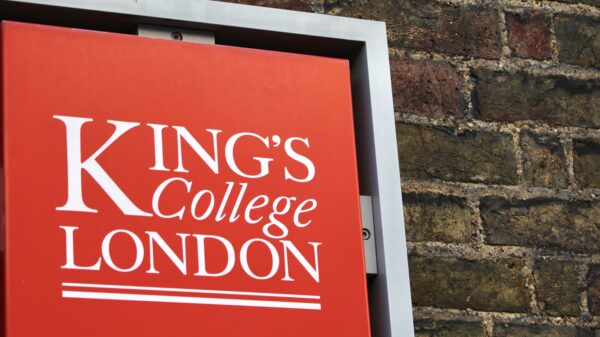Features Editor Fred Taylor sets out the causes behind the high rents that plague KCL students.
“The time is out of joint”, proclaimed Hamlet upon seeing the ghost of his dead father and learning of the murderous nature of his reigning uncle. The phrase, which indicates a sharp contrast between what one is actual experiencing compared to what one should be experiencing, was later used as the title of a Philip K. Dick novel, where he described a man who started to experience bizarre and disorienting events everywhere he ventured. This autumn, when King’s students arrive at their shoebox-sized accommodation and reflect upon the four digit figure they’ll be paying each month for the privilege, they may start to empathise with this feeling of out-jointedness. Don’t be surprised if you overhear a Shakespearean tragic rant from the neighbouring room as you move into your digs.
Currently, the average annual rent in London is £26k pa, a 60% raise compared to 2015. In central London, the rates are even worse, with a three-bedroom in Southwark costing a median of £2300 per month. If you decide to move further out, the relentless grip of the housing crisis will follow you there: a one bedroom in Croydon will set you back an exorbitant £990 pcm.
The pattern remains consistent for King’s residences, with the average price for a KCL room totalling more than a grand pcm. Freshers moving into their new King’s accommodation may be angered by this, as it is their very own institution which is charging them such a steep living fee despite promising to “support their wellbeing along their studies”. The recently created KCL Housing Action Campaign reflects this feeling.
Their engaging social media posts have gained some traction over the past months, already receiving almost 300 followers and many likes on their posts criticising the King’s administration for high rents.
Despite this traction, the group omits the help King’s does offer to students who struggle to get by on the rents they charge. For instance, look at the King’s Affordable Action Scheme (KAAS). Through it, students whose families earn below £42k a year can access far-below market rents (capped at £169 per week) and, thus, have the university subsidise their living costs.
Overall, 21% of King’s rooms are provided under this scheme, which gives substantial support to students from low-income backgrounds at the university. KCL’s aid goes further and spreads across students from all income brackets. While the rooms are compact, Wolfson House’s £169 pw at its unparalleled location just outside the Shard is a miraculously low price. Their £189 pw room in a four bedroom flat lies in sharp contrast to the average price of £491.75 pw charged for a privately rented room in a four bedroom flat in the area. So while King’s does charge market rent for many of its properties, they let 1821 out of 5596, a third, go at less than what they could extract on the market.
The fact is that, as much as some may wish, King’s cannot multiply the number of rooms it owns as Jesus multiplied fish upon the shores of the sea of Galilee. Each room costs tens of thousands to acquire and this financial burden has to fall on someone. Evidence might support expanding the KAAS bracket and KCL’s inaction in other areas such as with bursaries may have exacerbated the problem, but the root cause behind high rents lies elsewhere.
Furthermore, KCL Residences are irrelevant to the large part of the student body who will look to private parties in their search for a foothold within the borders of the bustling and tightly woven tapestry that is the British capital. The vast majority of King’s students will, at some point, end up having the monthly humiliating experience of seeing another £800 leave their account and travel straight to the pockets of an avaricious landlord, who has, with callous disregard, time and again forgotten to fix that leak that drips onto your bed or that moldy patch you need getting rid of. At the core of the question of high rents is landlord greed and in the UK, it is the excessively uncertain and complex planning system which has enabled landlords to have this almost unrestricted mandate over their tenants.
At a sharp contrast to planning systems across the US and Europe, English planning law is rooted in a prohibition of development. If you wish to build on land in England the state’s default position is a great big “no, you cannot develop”. On the other hand, in the US and Europe, it is a “Yes, you can develop, according to these restrictions”.
In order to overcome the default block on new development, builders will need to request planning permission from their local authority. They will subsequently make a decision on whether or not to allow development mainly in light of the area’s development plan. Proponents say that this harmonises national need and local character.
However, ever since the current system was introduced in 1947, the growth of UK housing stock has lagged behind demand, leading to the current situation where the the country lacks 4.3 million homes when compared to the average European country. A closer look shows that the system does not perform as premised and looks more like a Shakespearean tragedy, where the local authorities are the wicked advisor to the protagonist. They wish to show adherence to their master’s will when drafting an ambitious development plan, but in private act entirely to their own benefit when it comes to interpreting it.
To further this nightmare, the central government often neglects to disrupt the role of local independence, out of fear of losing the votes of local residents and reinforces the locality’s wishes at the expense of the national wellbeing.
The government issued National Planning Policy Framework is replete of examples of this kind. Take the “local character” provisions mentioned at five different points in the plan. These provisions are created with the aim of ensuring that new developments are not out of step with the area around them. In theory, this sounds fine, but in practice this means that in places where many homes have already been constructed, more can be built, because it fits local character. But in sparser areas where there has not been much construction, it doesn’t fit the ‘local character’ to build much housing.
Wealthier, less tightly packed areas use this loophole all the time to limit the number of developments they permit. In 2021/22, Tower Hamlets built one home for every 127 residents, while the far wealthier Richmond, built one for every 9762 inhabitants. This means that, poorer, denser, inner city neighbourhoods end up paying their fair share toward the national housing need, but richer, more rural ones don’t.
The planning system’s failure reached a culmination in 2016/17, a year in which England only built 148,000 homes, the lowest number since WW2. And in 2017, the reality of the abysmal housing crisis young people were grappling with finally ended up hitting central authorities like a wrecking ball. The Chancellor, at the time, Philip Hammond, got his toolbelt out and, like Bob the Builder, pledged to fix it by introducing a “mandatory” target of three hundred thousand homes a year in the UK. However, these measures did nowhere near enough to fix the problem. After 6 years of the targets being in place, the closest the UK had got to meeting the goal was in 2022, where it still managed to trail the objective by around 100,000 dwellings. The reality is that local councils frequently ignore the housing targets that are set and central government has been reluctant to actually enforce the numbers they themselves proposed a few years earlier.
Adding to the already lacking living space young people have to cope with, the Prime Minister abolished housing targets late last year, meaning that England will likely only complete 150,000 new homes per year from now on – far below the 442,000 over the next 25 years required to give us the same number of dwellings per capita as Europe.
Overall, whether your preference is for social, council or private housing, it is both the planning system and the actors within it that are preventing enough construction. While many attribute Thatcher’s 1980 ‘Right to Buy’ policies as the reason behind the housing crisis, problems had already started to emerge before then, with council housebuilding consistently slumping behind need between 1947 and 1979. Thatcher may have made the situation worse, but it is a planning system which trades certainty for discretion and which makes it too hard to ensure that local decisions work in conjunction with national need which has caused the Ballardian dystopia of a housing market that KCL students have no option but to attempt to survive in.
But young people should not resign themselves to a lifetime of forking over on average 40% of their income to the bottomless pit of a landlord’s bank account. Countries around the world have proven that change is possible.
For instance, the PM of Australia, faced with a similar crisis, pledged to build 1.2 million homes over the next five years, the equivalent of promising more than 500 thousand a year in the UK. Unlike the Ashes retention Australia were able to wrangle out of England earlier this year, these plans do seem legitimate. They offer significant financial motivation to regional bodies which should provide the impulse needed to meet the ambitious national objective.
Adopting zoning systems akin to those in the US and Europe could also increase housebuilding up to the rate required for property prices to be cheap enough to not bankrupt the young. The implementation of liberal zoning laws in New Zealand in 2021 has ushered in a new surge of housebuilding, increasing the rate by 50%. Thanks to this construction, economists predict that younger generations in the country will save a massive £83k per household in rent– no wonder they’re willing to live in the middle of nowhere.
So while the rents are out of joint in the UK, the solutions to our problems are out there. Hamlet’s next line: “that ever I was born to set it right”, should inspire the tone of future planning policy in England. To build or not to build, that is the question. But if homebuilding does not increase in the UK, we might witness a modern Shakespearean tragedy unfold, as the system will have created a generation of young people whose only realistic path to homeownership is patricide.












